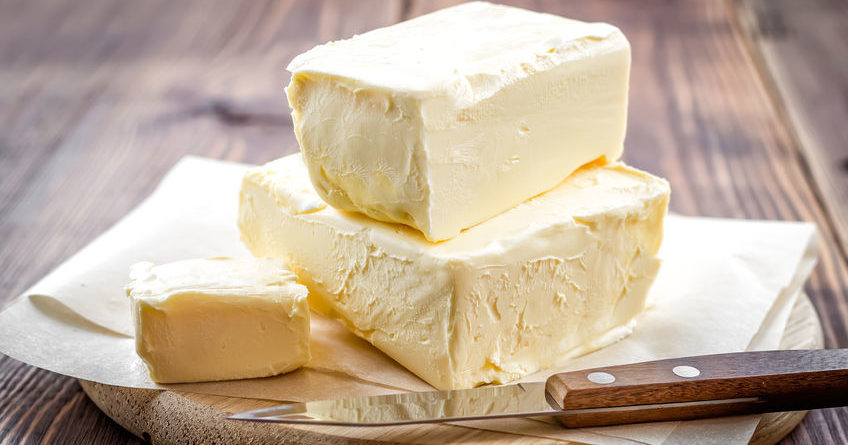Written By Julie Paiva, CHHC
Whether it is to drizzle over a mouthwatering steak, to add some flavor to your favorite vegetables, or even to replace the cream in your coffee, who doesn’t love the taste of butter? Thankfully, butter is shedding its bad reputation and finally being acknowledged for its many benefits. Move over margarine, butter is back!
Not all butter is created equal.
Butter is basically milk fat, aka butter fat. Butterfat is highly complex. The benefits you gain from butter do depend on the type of butter. The color of butter can range from white to deep yellow. The yellow variety, aka pasture butter, is the healthiest, which is the result of cows being grass-fed. The amounts of nutrients in butter vary greatly depending on what the cows ate. When a cow lives on a diet primarily consisting of grass, the cream it produces is rich in beta-carotene (the form of vitamin A found in plants). Grass-fed cows produce butter that is higher in all of the beneficial nutrients. Grass-fed butter is one of the healthiest fats on the planet.
There is such thing as good fat.
Butter contains about 400 different fatty acids, and a decent amount of fat-soluble vitamins. Butter is America’s best and most easily absorbed source of vitamin A. It contains lecithin, a substance that assists in the proper assimilation and metabolism of cholesterol and other fat constituents. Butter has the fatty acid CLA (conjugated linoleic acid). Grass-fed butter contains five times more CLA, is higher in Omega-3 fatty acids and vitamin K2 than butter from grain-fed cows.
Nature knows best.
Margarine is NOT equal to butter. If you’re thinking that margarine and butter are closely related, you may be in for a surprise. Margarine is nothing like butter. For starters, there’s nothing natural about it. Margarine was first created inside the lab of French scientist Michel Eugene Chevreul. There is nothing natural about margarine. Ever since it was created, margarine has predominantly been made from highly unhealthy trans fat. It was only recently that food industry has admitted to how harmful trans fat is to the body.
If you are familiar with the Dr. Brown Diet, then you know that he recommends avoiding cow dairy; however, he has found that most of his patients can tolerate and even benefit from pasture butter. To learn more about this subject, see our previous post called The Scoop on Dairy.
A little butter humor to brighten your day:
Why did the boy throw butter at the window? To see the BUTTERFLY.
I’d tell you a BUTTER joke, but you’d probably spread it.
There he is my BUTTER from another udder.
I like you BUTTER than anyone else.
BUTTER you than me.
BUTTER late than never.
“You deserve better,” he said and she replied, “You bread my mind.”
It’s pretty much a guarantee that your local health store has organic, grass-fed butter, and I have been able to find it at every chain grocery store carries I have been in lately. When shopping for butter make sure it is organic, grass-fed, unsalted or salted with sea salt!




